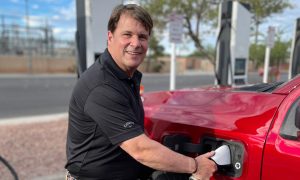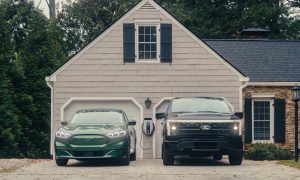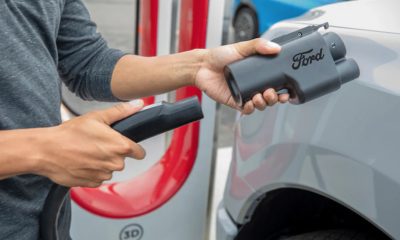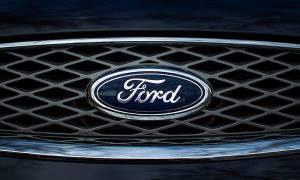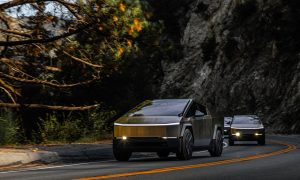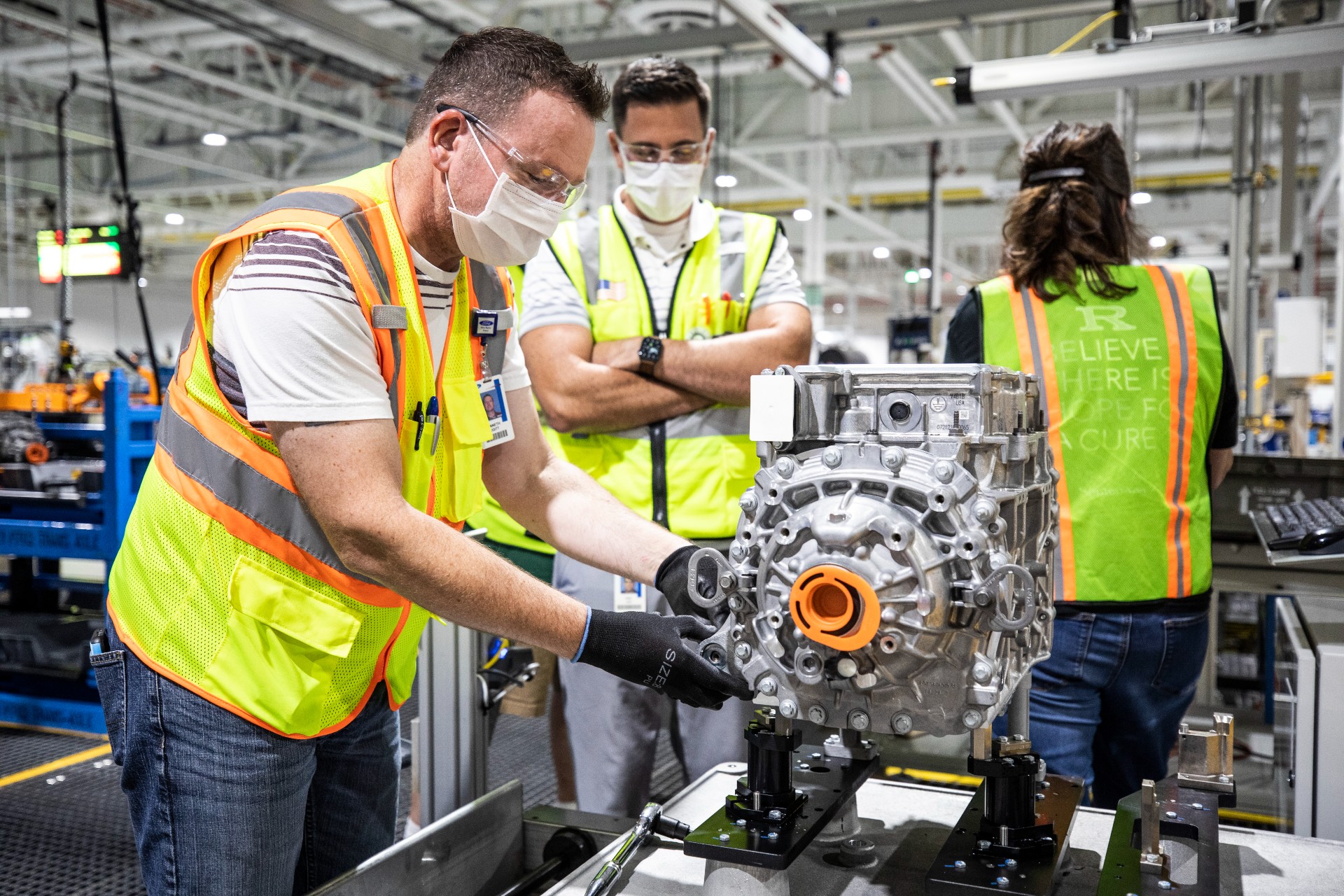

Investor's Corner
Ford CEO Farley sees merit in separating EV biz to obtain Tesla-sized market cap
Ford CEO Jim Farley believes there may be some merit to separating the automaker’s electric vehicle project from the company’s main operation. A pure-play EV business, separate from Ford’s reputable brand of combustion engine vehicles that have existed since 1903, may help the automaker obtain a Tesla-sized market capitalization.
Farley sees merit in potentially separating the two different powertrains into separate entities, people familiar with the matter told Bloomberg in a new report. Hoping to launch its brand into a value level similar to Tesla’s, Farley believes a spinoff business that focuses purely on electric vehicles could pay dividends, especially as Ford and other legacy automakers have committed to fully-electric futures, void of any combustion engine vehicles.
The mixup may not require a separate brand name or even split the operation. This may prove to be too difficult, and Ford is not considering the option, according to the report. Farley may separate the EV business internally as a “unit,” and it could be the first consideration in Ford’s recently-revealed $20 billion playbook mixup.
A New EV Playbook
In another report, it was revealed that Ford was willing to spend an additional $20 billion of company funds to restructure its EV playbook. Ford plans to use the massive budget to utilize specific strategies that Tesla used to gain its notoriety as the leader in the EV sector.
Ford doubles its F-150 Lightning production target again to 150k units per year
Ford intends to spend between $10 and $20 billion on the project, giving it a sky-high budget and relative free range for business moves. “We are executing our Ford Plus plan to transform the company and thrive in this new era of electric and connected vehicles. We would not comment on speculation,” Ford’s Communications Chief, Mark Truby, said in the report.
Ford also expanded its production goals on Farley’s request. The automaker plans to deliver at least 600,000 electric units within 22 months. With the Mustang Mach-E being the number two most popular EV in the crossover market, the F-150 Lightning set for deliveries in the Spring, and the E-Transit beginning deliveries last month, Ford seems like it has the capacity, plan, and certainly the funding to accomplish its goals.
Tesla’s Massive Market Cap
Tesla is the world’s most valuable automaker by a considerable margin. Led by its massive increase in stock price over the past two years, Tesla has skyrocketed to monumental levels not thought to be possible at one point for a simple automotive company. However, Tesla has revolutionized the way the consumer market looks at vehicles, turning them from machines to technological marvels that receive updates just like a cell phone.
Tesla stock has gained over 856 percent since January 3, 2020. Most of the company’s increased valuation came from profitability, increases in production and deliveries, the introduction of new battery and safety technologies in its vehicles, and a resilience through the COVID-19 pandemic that seemed to exist only in the automaker’s Fremont factory in Northern California. Despite Tesla being a small, scrappy automaker with as few as 80,000 deliveries in a quarter just a few years ago, the company managed to basically evade the entire semiconductor shortage thanks to engineering and stockpiling.
Nevertheless, Tesla is the perfect picture of what an EV company looks like from a financial perspective. A healthy cash flow, plenty of profitability, and continuing and proven growth gets a company to those levels. At least it does in the EV world.
ICE and EV – Like Oil and Water
“Running a successful ICE business and a successful BEV business are not the same. I’m really excited about the company’s commitment to operate the businesses as they should be,” Farley said during Ford’s recently-held Q4 Earnings Call. Farley may have been considering the option of separating the two businesses for some time. Obviously, this was not an idea that sprung up overnight. However, it appears this may have been in the works since 2021.
More Bloomberg sources said Ford had met with advisers to explore additional options for the EV operation. Farley wants to maximize the value of the EV portion of Ford’s business and has considered a potential spinoff company or even a full-on breakup. However, his idea has eventually evolved into an “internal split,” the sources said. This could still prove to be difficult, especially as it could require significant restructuring in the manufacturing layout of the company. Facilities that build both ICE and EV vehicles would need to be separated; an extremely complex task that could take a long time and cost a lot of money. Additionally, employees would have to be separated in the mixup.
Up and Onward
Ford stock spiked on Friday following the initial reports of Ford’s potential EV-ICE business breakup. Shares were up 2.88 percent at 11:57 AM in New York.
Analysts are bullish regarding the potential of Ford’s shake-up, and the F-150 Lightning is leading the way. “Huge step in the right direction as Farley doubling down on EV vision. We believe Ford is in the midst of massive EV transformation led by Electric F-150,” Wedbush’s Dan Ives said.
Disclosure: Joey Klender is not a Ford Shareholder.
I’d love to hear from you! If you have any comments, concerns, or questions, please email me at joey@teslarati.com. You can also reach me on Twitter @KlenderJoey, or if you have news tips, you can email us at tips@teslarati.com.
Investor's Corner
Tesla could save $2.5B by replacing 10% of staff with Optimus: Morgan Stanley
Jonas assigned each robot a net present value (NPV) of $200,000.
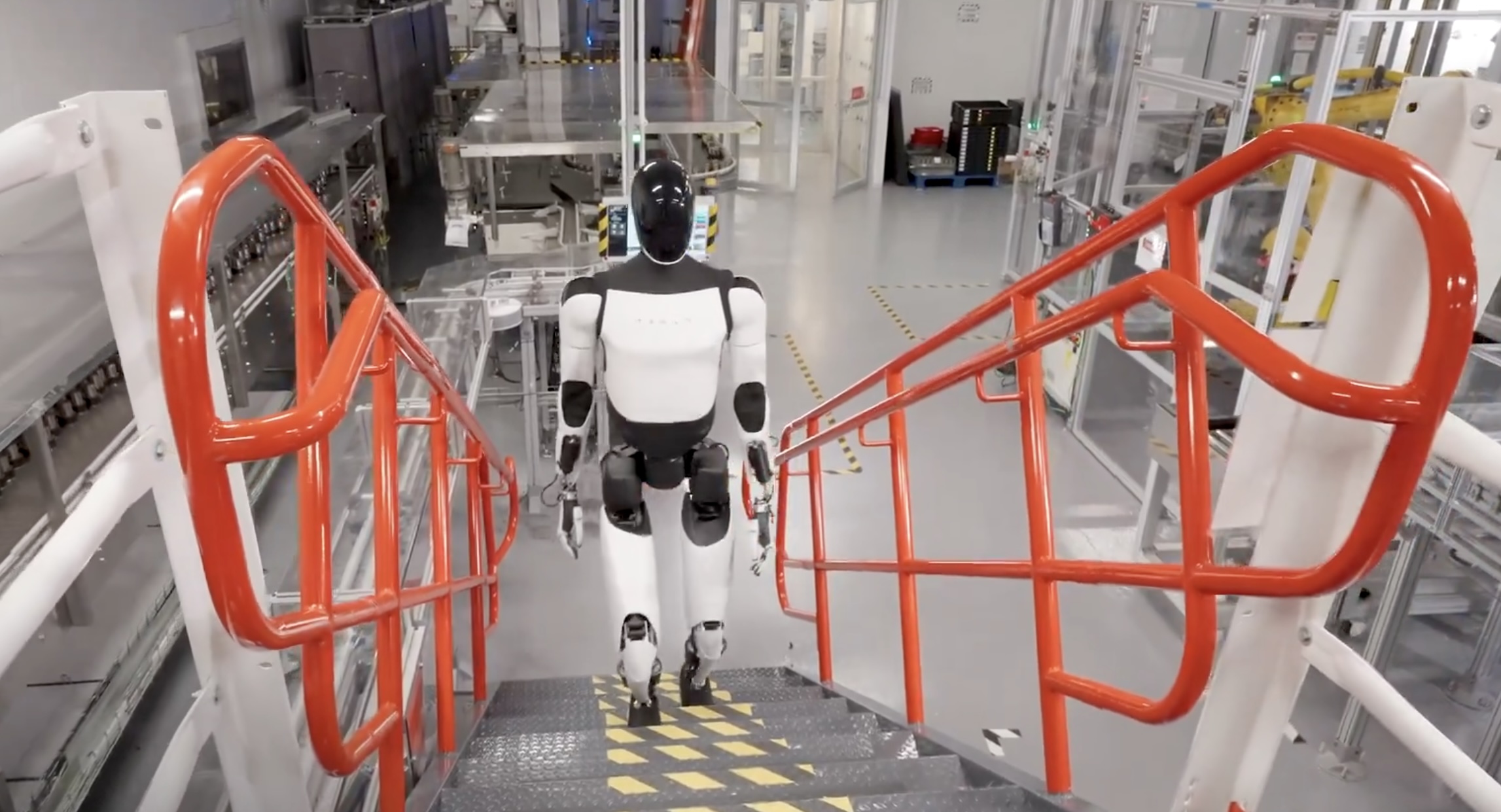
Tesla’s (NASDAQ:TSLA) near-term outlook may be clouded by political controversies and regulatory headwinds, but Morgan Stanley analyst Adam Jonas sees a glimmer of opportunity for the electric vehicle maker.
In a new note, the Morgan Stanley analyst estimated that Tesla could save $2.5 billion by replacing just 10% of its workforce with its Optimus robots, assigning each robot a net present value (NPV) of $200,000.
Morgan Stanley highlights Optimus’ savings potential
Jonas highlighted the potential savings on Tesla’s workforce of 125,665 employees in his note, suggesting that the utilization of Optimus robots could significantly reduce labor costs. The analyst’s note arrived shortly after Tesla reported Q2 2025 deliveries of 384,122 vehicles, which came close to Morgan Stanley’s estimate and slightly under the consensus of 385,086.
“Tesla has 125,665 employees worldwide (year-end 2024). On our calculations, a 10% substitution to humanoid at approximately ($200k NPV/humanoid) could be worth approximately $2.5bn,” Jonas wrote, as noted by Street Insider.
Jonas also issued some caution on Tesla Energy, whose battery storage deployments were flat year over year at 9.6 GWh. Morgan Stanley had expected Tesla Energy to post battery storage deployments of 14 GWh in the second quarter.
Musk’s political ambitions
The backdrop to Jonas’ note included Elon Musk’s involvement in U.S. politics. The Tesla CEO recently floated the idea of launching a new political party, following a poll on X that showed support for the idea. Though a widely circulated FEC filing was labeled false by Musk, the CEO does seem intent on establishing a third political party in the United States.
Jonas cautioned that Musk’s political efforts could divert attention and resources from Tesla’s core operations, adding near-term pressure on TSLA stock. “We believe investors should be prepared for further devotion of resources (financial, time/attention) in the direction of Mr. Musk’s political priorities which may add further near-term pressure to TSLA shares,” Jonas stated.
Investor's Corner
Two Tesla bulls share differing insights on Elon Musk, the Board, and politics
Two noted Tesla bulls have shared differing views on the recent activities of CEO Elon Musk and the company’s leadership.

Two noted Tesla (NASDAQ:TSLA) bulls have shared differing views on the recent activities of CEO Elon Musk and the company’s leadership.
While Wedbush analyst Dan Ives called on Tesla’s board to take concrete steps to ensure Musk remains focused on the EV maker, longtime Tesla supporter Cathie Wood of Ark Invest reaffirmed her confidence in the CEO and the company’s leadership.
Ives warns of distraction risk amid crucial growth phase
In a recent note, Ives stated that Tesla is at a critical point in its history, as the company is transitioning from an EV maker towards an entity that is more focused on autonomous driving and robotics. He then noted that the Board of Directors should “act now” and establish formal boundaries around Musk’s political activities, which could be a headwind on TSLA stock.
Ives laid out a three-point plan that he believes could ensure that the electric vehicle maker is led with proper leadership until the end of the decade. First off, the analyst noted that a new “incentive-driven pay package for Musk as CEO that increases his ownership of Tesla up to ~25% voting power” is necessary. He also stated that the Board should establish clear guidelines for how much time Musk must devote to Tesla operations in order to receive his compensation, and a dedicated oversight committee must be formed to monitor the CEO’s political activities.
Ives, however, highlighted that Tesla should move forward with Musk at its helm. “We urge the Board to act now and move the Tesla story forward with Musk as CEO,” he wrote, reiterating its Outperform rating on Tesla stock and $500 per share price target.
Tesla CEO Elon Musk has responded to Ives’ suggestions with a brief comment on X. “Shut up, Dan,” Musk wrote.
Cathie Wood reiterates trust in Musk and Tesla board
Meanwhile, Ark Investment Management founder Cathie Wood expressed little concern over Musk’s latest controversies. In an interview with Bloomberg Television, Wood said, “We do trust the board and the board’s instincts here and we stay out of politics.” She also noted that Ark has navigated Musk-related headlines since it first invested in Tesla.
Wood also pointed to Musk’s recent move to oversee Tesla’s sales operations in the U.S. and Europe as evidence of his renewed focus in the electric vehicle maker. “When he puts his mind on something, he usually gets the job done,” she said. “So I think he’s much less distracted now than he was, let’s say, in the White House 24/7,” she said.
TSLA stock is down roughly 25% year-to-date but has gained about 19% over the past 12 months, as noted in a StocksTwits report.
Investor's Corner
Cantor Fitzgerald maintains Tesla (TSLA) ‘Overweight’ rating amid Q2 2025 deliveries
Cantor Fitzgerald is holding firm on its bullish stance for the electric vehicle maker.
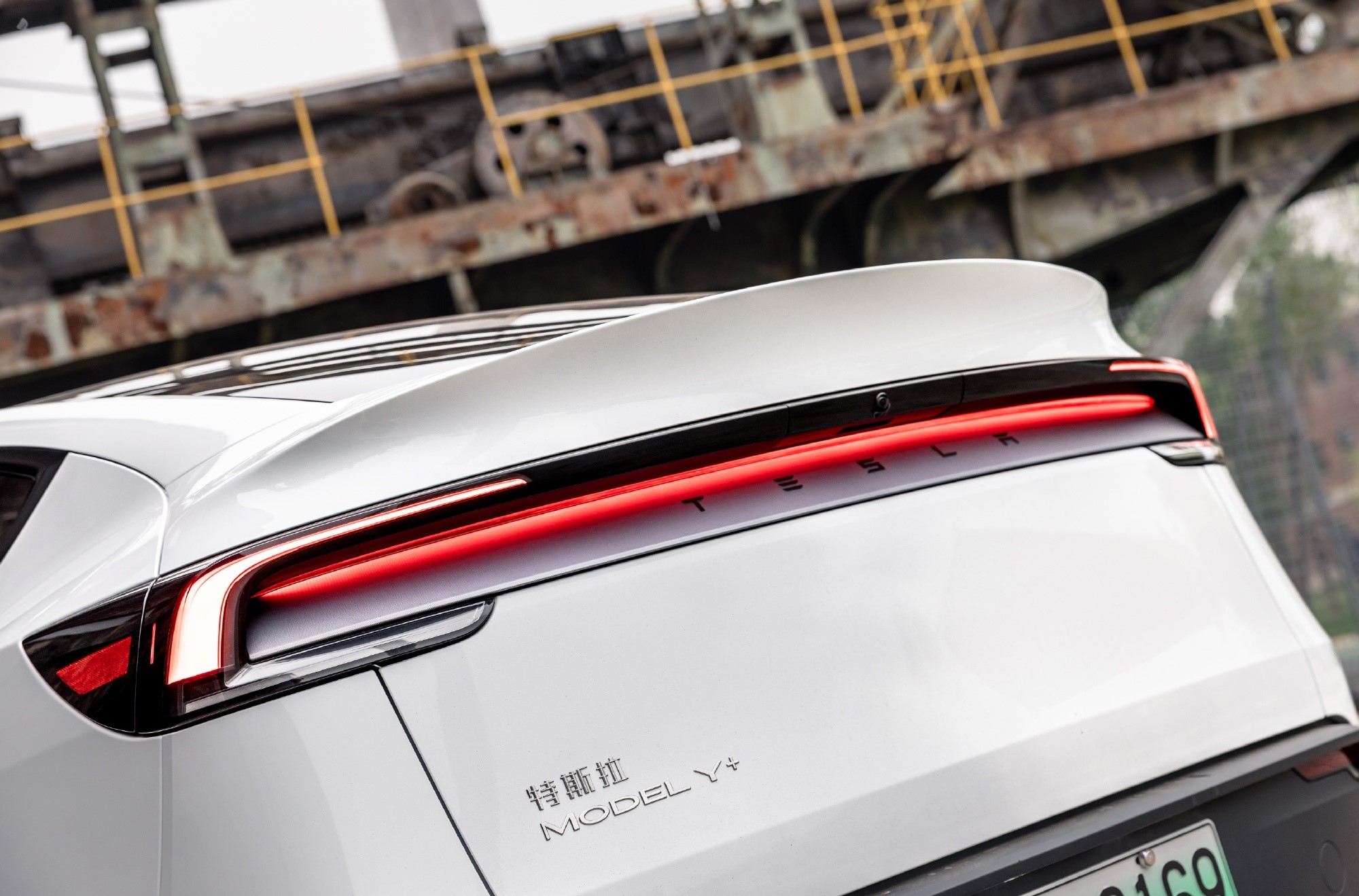
Cantor Fitzgerald is holding firm on its bullish stance for Tesla (NASDAQ: TSLA), reiterating its “Overweight” rating and $355 price target amidst the company’s release of its Q2 2025 vehicle delivery and production report.
Tesla delivered 384,122 vehicles in Q2 2025, falling below last year’s Q2 figure of 443,956 units. Despite softer demand in some countries in Europe and ongoing controversies surrounding CEO Elon Musk, the firm maintained its view that Tesla is a long-term growth story in the EV sector.
Tesla’s Q2 results
Among the 384,122 vehicles that Tesla delivered in the second quarter, 373,728 were Model 3 and Model Y. The remaining 10,394 units were attributed to the Model S, Model X, and Cybertruck. Production was largely flat year-over-year at 410,244 units.
In the energy division, Tesla deployed 9.6 GWh of energy storage in Q2, which was above last year’s 9.4 GWh. Overall, Tesla continues to hold a strong position with $95.7 billion in trailing twelve-month revenue and a 17.7% gross margin, as noted in a report from Investing.com.
Tesla’s stock is still volatile
Tesla’s market cap fell to $941 billion on Monday amid volatility that was likely caused in no small part by CEO Elon Musk’s political posts on X over the weekend. Musk has announced that he is forming the America Party to serve as a third option for voters in the United States, a decision that has earned the ire of U.S. President Donald Trump.
Despite Musk’s controversial nature, some analysts remain bullish on TSLA stock. Apart from Cantor Fitzgerald, Canaccord Genuity also reiterated its “Buy” rating on Tesla shares, with the firm highlighting the company’s positive Q2 vehicle deliveries, which exceeded its expectations by 24,000 units. Cannacord also noted that Tesla remains strong in several markets despite its year-over-year decline in deliveries.
-
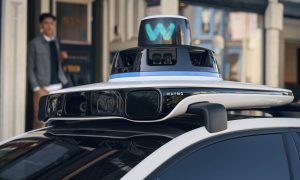
 Elon Musk1 day ago
Elon Musk1 day agoWaymo responds to Tesla’s Robotaxi expansion in Austin with bold statement
-
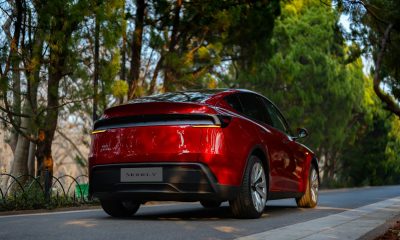
 News1 day ago
News1 day agoTesla exec hints at useful and potentially killer Model Y L feature
-
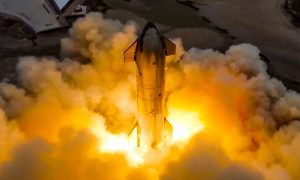
 Elon Musk2 days ago
Elon Musk2 days agoElon Musk reveals SpaceX’s target for Starship’s 10th launch
-

 Elon Musk3 days ago
Elon Musk3 days agoTesla ups Robotaxi fare price to another comical figure with service area expansion
-
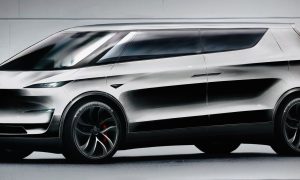
 News1 day ago
News1 day agoTesla’s longer Model Y did not scale back requests for this vehicle type from fans
-

 News1 day ago
News1 day ago“Worthy of respect:” Six-seat Model Y L acknowledged by Tesla China’s biggest rivals
-

 News2 days ago
News2 days agoFirst glimpse of Tesla Model Y with six seats and extended wheelbase
-
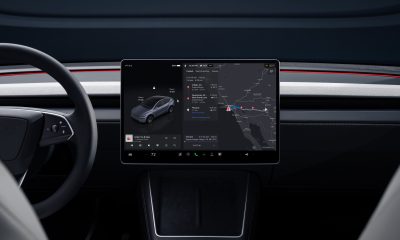
 Elon Musk2 days ago
Elon Musk2 days agoElon Musk confirms Tesla is already rolling out a new feature for in-car Grok


